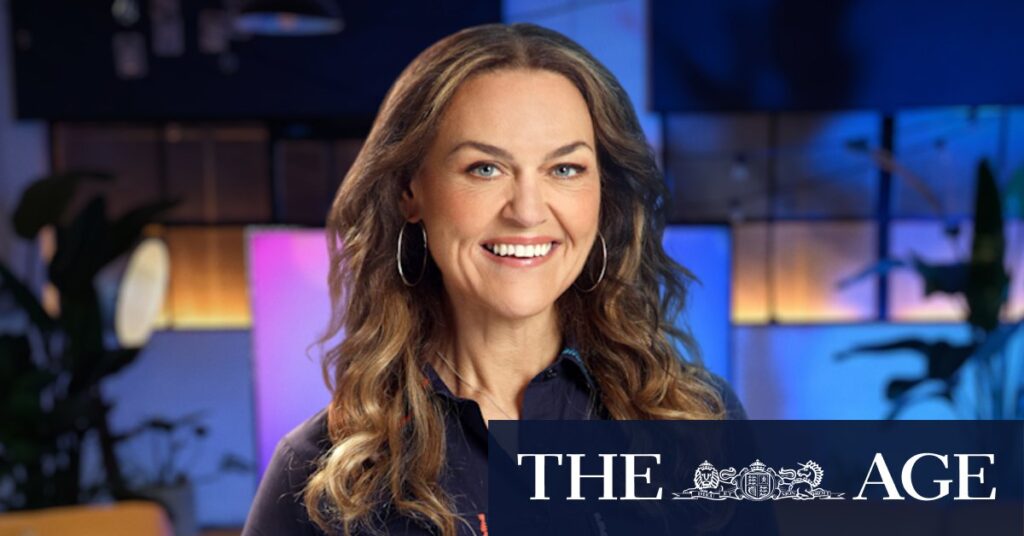
Seven Network’s revival of the ’90s lifestyle show Healthy, Wealthy & Wise inadvertently highlights the significant transformation of commercial free-to-air television over the past few decades. For those hopeful about the future of this once-dominant sector, the reboot offers a rather bleak outlook.
Originally airing on Network Ten from 1992 to 1998, the show was a prominent player in the “infotainment” genre, offering viewers a mix of renovation, gardening, finance, motoring, travel, pet care, and cooking tips. It was a staple of Monday night prime-time television, known for its diverse content and high production values.
The Original Show: A Benchmark of Quality
The original Healthy, Wealthy & Wise stood out not only for its content but also for its impressive production quality. Filmed entirely on location, both domestically and internationally, the show was visually dynamic, providing viewers with ever-changing backdrops. This approach allowed camerapeople to exercise creativity, resulting in a rich visual experience.
Presenters like chef Iain Hewitson and craft expert Tonia Todman became household names, contributing to the show’s popularity and prestige. The magazine-style format allowed for longer stories, offering a depth that was rare in similar programs.
A New Era of Commercial Television
The rebooted version of Healthy, Wealthy & Wise is a stark contrast to its predecessor. Anchored in a studio, it suggests a focus on cost-effectiveness, with the talk-show setup relying heavily on host Chrissie Swan. The show now includes comedian Ash Wicks as an “info wiz,” adding a comedic element while filling in for the absent studio audience with canned applause.
When the show ventures outside the studio, the production style is notably less creative, prioritizing product placement over visual storytelling. This aligns with current trends in television where shows like The Block offer substantial promotion for sponsors, reflecting a shift in priorities from content quality to financial viability.
Segments and Sponsorships
The new segments on the show further illustrate this shift. Former Real Housewife Chyka Keebaugh leads personal makeovers, heavily promoting a clothing-store chain, while Aimee Stanton’s “room rescue” segments highlight furniture and flooring companies. Dr. Mike Mrozinski’s health advice, though useful, also serves as a promotion for an optical retail chain.
“This cut-price revival appears to be less concerned with the quality of its content and more attuned to its viability as a financial proposition for the network.”
The emphasis on sponsorship is not unique to Healthy, Wealthy & Wise. Travel shows like Nine’s Postcards and Ten’s The Brighter Side are similarly funded by tourism agencies and banks, respectively, indicating a broader industry trend.
Adapting to Modern Viewing Habits
The revamped show also operates at a rapid pace, perhaps in response to modern viewers’ shortened attention spans and the prevalence of second-screen activity. Segments are condensed into brief snippets, with presenters delivering advice at breakneck speed. This approach, however, risks undermining the content’s value and viewer satisfaction.
While the addition of comedic elements and segments like the “box of death” aim to engage audiences, they may detract from the show’s original intent. Comedian Dave Thornton, participating in the segment, aptly remarked, “This doesn’t feel healthy, wealthy or wise. This doesn’t hit any of the KPIs,” encapsulating the sentiment of many viewers.
Looking Forward: The Future of Free-to-Air TV
The reboot of Healthy, Wealthy & Wise reflects a broader shift in the television industry, where commercial considerations increasingly overshadow content quality. As networks continue to prioritize cost-effectiveness and sponsorships, the future of free-to-air television remains uncertain.
While the industry adapts to changing viewer habits and economic pressures, the challenge will be to balance commercial interests with the delivery of engaging and high-quality content. As audiences become more discerning, networks may need to reconsider their strategies to retain viewership and relevance in a rapidly evolving media landscape.





